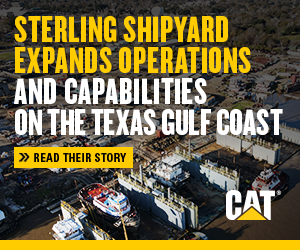Moin Chosen for New Port in Costa Rica
Costa Rica would like to take advantage of its proximity to the world’s most important inter-oceanic shortcut. A contract for a new terminal has the capacity to accommodate the larger ships that will soon be plying the waters of the expanded Panama Canal.
However there is one last obstacle to overcome: environmental approvals.
The new terminal will be on the Caribbean coast of the small Central American country in the Puerto Limon/Moin port complex. That complex already handles more than one million TEUs a year – about 80 percent of Costa Rica’s maritime commerce. In March 2011 the Costa Rican government signed a $992 million 33-year contract to Dutch company APM terminals to design build operate and maintain the new container terminal. In October APM announced that it had hired a consortium comprising the dredging and construction service companies Van Oord and BAM International to complete the fi rst phase of the project. The subcontract is worth $460 million and will be split between the two companies equally.
Port Construction
The consortium’s scope of work will include building an island about 500 meters (1640 feet) offshore. It will involve reclaiming an area of 40 hectares (about 99 acres) constructing 1.5 kilometers (one mile) of reinforced shoreline and breakwater protection and dredging the access channel and turning basin.
Van Oord’s part will include the dredging and rock installation while BAM International will build the 650-meter (2130-foot) pier conduct soil improvement construct all buildings and install utilities.
For the work Van Oord will deploy a trailing suction hopper dredge a cutter suction dredge and rock installation equipment. The dredged material will be deposited a few miles offshore in a site that has been used for all previous dredging activities over the past decades APM General Manager Rogelio Douglas said.
As it stands the Puerto Limón/Moin complex can only handle vessels of up to 2500 TEU capacity. Puerto Limón has a large container terminal but it cannot expand because it is surrounded by the city of Limón. The port of Moin about 10 kilometers (six miles) to the northwest has much more room to grow so the new terminal will go there. As it stands Moin is dredged to a depth of 11 meters (36 feet). The new terminal will initially push that depth to 14 meters (46 feet) and eventually to 18 meters (59 feet). The new terminal would initially increase the complex’s throughput capacity by 1.3 million TEUs and could eventually expand it to 2.7 million TEUs at full build-out. The entire project would represent a $1 billion investment and could produce 400 direct jobs and 5000 indirect jobs.
But developers aren’t in the clear to begin construction just yet: the project must still receive environmental approvals from a country that is renowned for being ecologically sensitive. A public hearing on the project’s potential environmental impacts was scheduled in Limón for early November. Prior to the meeting some environmental activists had already stated concerns that the project’s environmental impact report was unsatisfactory and that more public hearings including one in the capital San Jose should be conducted. An attorney leading an environmental group complained that the project lacked outreach to the community.
Douglas said that the company feels the environmental attacks are aimed at slowing down the project. “We are interested in disseminating information about the project but we feel these are attempts to delay progress” Douglas told La Nacion.
Optimism for Environmental Approvals
Israel Oconitrillo González chief spokesman for the Port Authority and Economic Development in the Atlantic Coast Council (JAPDEVA) said the environmental concerns shouldn’t be too problematic to overcome. The zone where they will construct the new port already has a port with a petroleum terminal and a container terminal there Ocontrillo said.
Douglas also downplayed any concerns about the environmental approvals.
“We are not anticipating any diffi culty obtaining the environmental permit since we have conducted an extensive 3000-page study” he said in an email to IDR. “This includes proposed mitigation and long-term conservation actions. We are fully aware and support the strong environmental protection culture in the country and plan not only to comply but to enhance these practices.”
Douglas said the study highlighted the need to have minimum impact on the pristine Moin beach shoreline which has no development and also the need to protect the sea turtle nesting ground to the north.
With approvals construction on the port could start as soon as early next year and operations would begin in April 2016; the construction would be completed by 2017. Further expansion of the port would be instigated by traffic volume triggers in APM’s concession contract Douglas said.
There’s no doubt that the country needs thenew facilities Ocontrillo said. The diminutive nation packs an oversized economic punch as the world’s number one exporter of fresh pineapple and number two exporter of bananas. It also exports large quantities of coffee sugar and melons plus electronic components and medical equipment. Those goods make their way to the U.S. China and Europe. The goods heading to Asia must transit the canal.
“The growth in exports requires a better port that’s larger faster and more agile” Ocontrillo said. “Costa Rica produces a lot; it exports a lot. It needs a new port.”



